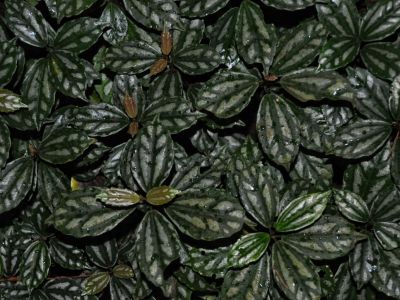Pellonia is usually utilized in hanging baskets but also works well in terrariums. This herbaceous perennial hails from the family Urticaceae and has a low growing habit, 3 to 6 inches (8-15 cm.), with spreading or creeping tendencies of 1 to 2 feet (31-61 cm.), making Pellonia useful as a groundcover in appropriate climates.
How to Grow Pellonias
Hardy in USDA zones 10 through 12, Pellonia is an easy to grow houseplant that requires minimum maintenance. Pellonia care requires a medium amount of water and a part shade exposure, flourishing in bright, indirect light. Pellonia houseplant care tips include keeping the soil consistently moist during its growing phase of the spring and summer months while reducing irrigation during the fall through late winter. Pellonia also appreciates a site with high humidity and can be lightly misted to maintain humid conditions. Growing Pellonia plants requires a minimum temperature of 60 degrees F. (16 C.), and in cooler climates must be grown indoors or in a greenhouse. When growing Pellonia houseplants in hanging baskets, line the basket with moss and then fill with equal portions of loam and peat with a generous amount of sand included to facilitate good drainage. Plant root cuttings 4 inches (10 cm.) apart, water, and then hang the basket in a partly shady area and continue to spritz daily. When growing Pellonia plants, propagation can be easily achieved via stem cuttings or by gently separating the root structure. Pinch the stems of the Pellonia houseplant to train the plant into the desired shape.
Other Information on Pellonia Care
Pellonia houseplants are primarily disease and insect resistant. Pellonia, however, is sensitive to drafts which may cause leaves to drop. Although Pellonia likes humidity and moist soil, overwatering or poorly draining soil medium may cause the roots to rot. The tiny green blooms of Pellonia are unlikely to make an appearance when grown as a houseplant, but the beauty of its foliage makes up for the lack of blooms.
